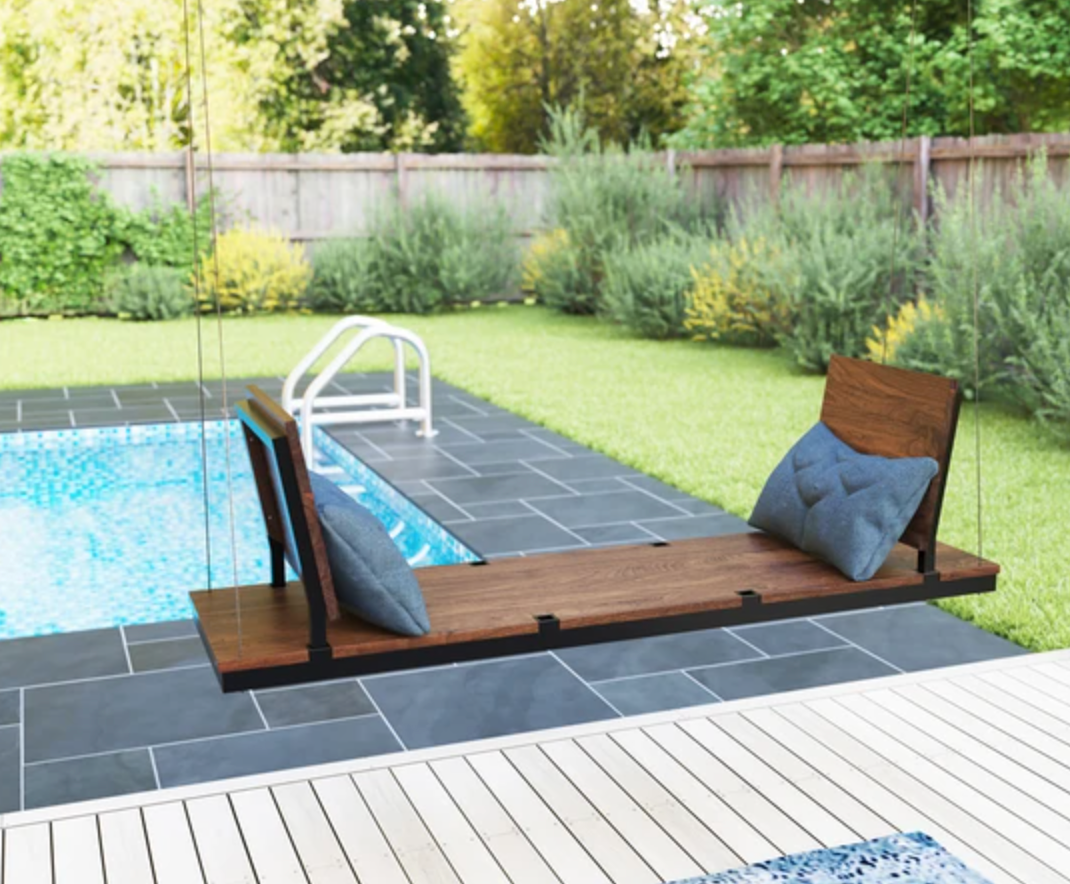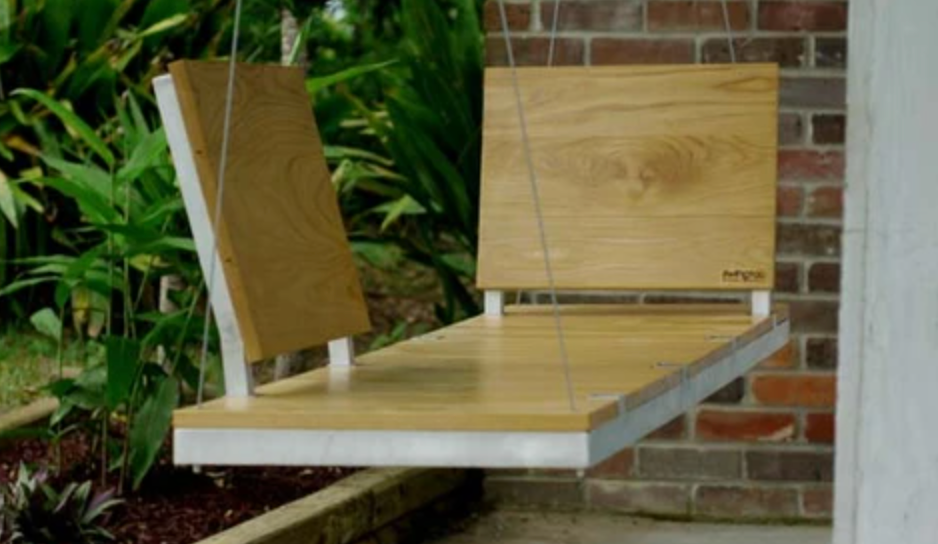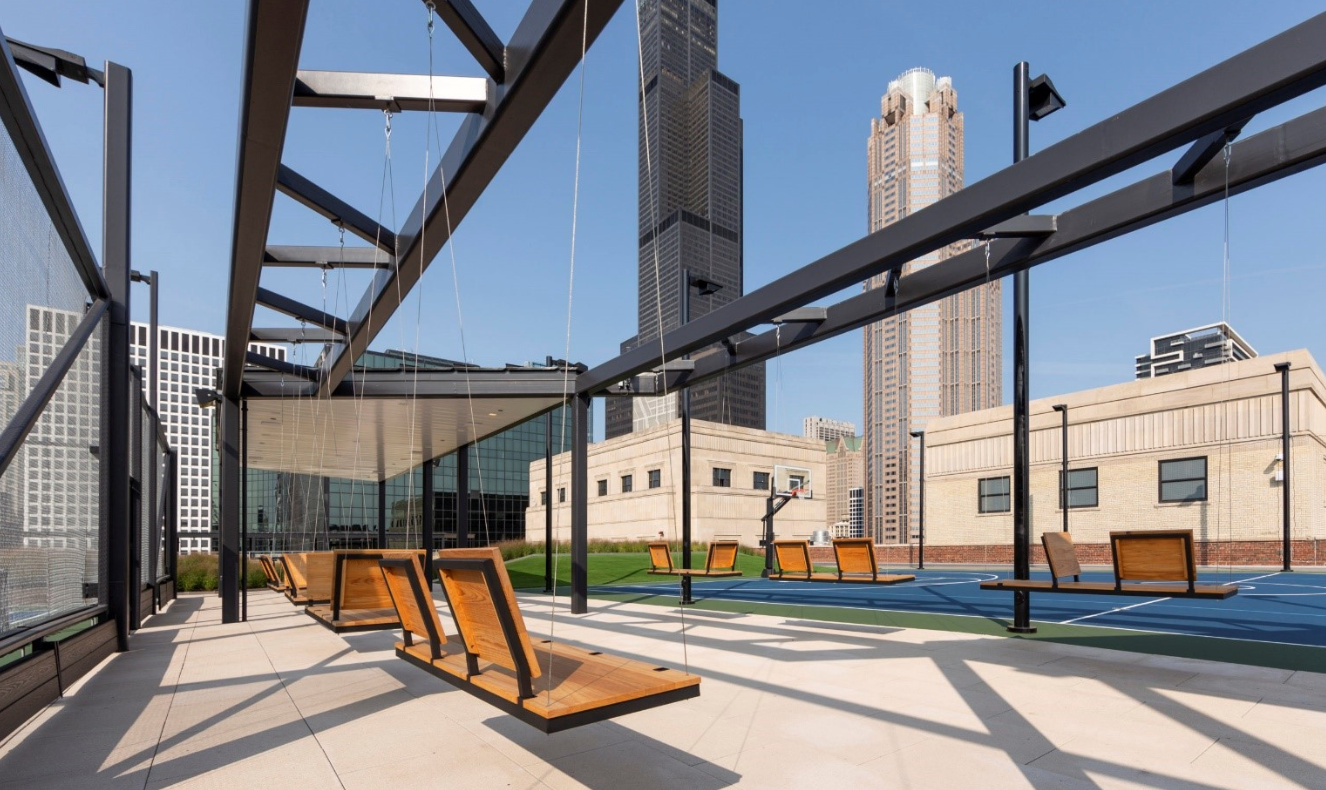
Simple yet sophisticated touches are often the missing ingredient that transforms a space from run-of-the-mill to luxurious. Understated in its inherent charm, a porch swing is a timeless piece that makes outdoor living an inviting respite from busy life.
Once the work projects are done, the dishes washed, and the dog walked, a porch swing is a quiet escape to reflect. The simple pleasure makes your home feel like a retreat.
Having a nice place to unwind doesn’t have to cost a fortune. There are a seemingly endless variety of porch swings on the market. And the price points are just as diverse. They range from a few hundred dollars to a few thousand dollars.
Material is the most influential factor in the price difference. Of course, like all furnishings, high quality equates to a higher price point. Because a porch swing is subject to the elements, insects, and, perhaps, being touched by hands sticky with barbecue sauce after a summer cookout, its material substantially impacts its longevity.
This porch swing cost guide will explore the different options available to help you determine which swing is best for your lifestyle.
Budget-Friendly Options
Porch swings are made from a variety of materials, including wood, plastic composites, and even fabric. Budget-Friendly porch swings can be picked out at big box stores such as Costco or Target for less than $300. Buyer beware that the cost correlates with quality.
Typically, low-budget porch swings are constructed with steel pipes, advises Yoder Woodcrafters. This can cause the porch swing to corrode, or rust, which eventually renders the swing unusable or possibly dangerous to sit on. These low-ticket swings may not withstand the elements for more than a season or two before needing to be replaced.
Common Materials Used to Craft a Porch Swing

Wicker, wood, metal, Polywood, and fabric are the most commonly used porch swing materials. You’ll likely be choosing among these materials when selecting your porch swing.
Wicker
Woven wicker lends itself to outdoor furniture. It’s a popular choice for porch swings because it’s a lightweight yet sturdy material. Wicker porch swings tend to be on the lower end of the price range, most costing a few hundred dollars. Wicker swings are often coated with protective resin but aren’t as capable as a solid wood swing when it comes to withstanding the elements. Most people tend to choose wicker for its whimsical aesthetic. Just be prepared to store indoors during stormy or winter weather.
Wood
Wooden porch swings are the most classic style. These swings are reminiscent of Southern wrap-around porches showcased on home decor magazines. Wooden porch swings come in a wide variety of prices. They are most often crafted from cedar, cypress, or fir.
Generally speaking, the more durable the wood, the more expensive the swing. This is almost always a fair trade since the higher the quality, the longer it will last. The more costly wooden porch swings are built to be left out in the elements all year long when adequately treated, saving the hassle of seasonal disassembly and storage.
Of course, not all wooden porch swings fall into the traditional aesthetic. The modern Organic Swing marries the classic appeal of a traditional porch swing with contemporary style. Its minimalist design swaps traditional wood-slat design in favor of sleek inlaid cypress boards.
Unlike traditional wooden porch swings — or any other porch swing — the Organic Swing's cypress wood backrests can easily be reconfigured into multiple positions. Multiple styles for the price of one is a distinct benefit.
The cypress wood pieces are set on a lightweight steel frame and suspended from galvanized, aircraft-grade steel cable for a decidedly modern look and added strength. The frames are powder-coated to provide maximum durability against scratching and wear. These steel frames are resistant to rust.
Metal
Some porch swings are comprised entirely of metal, most often iron or steel. They are typically characterized by intricate design details on the back and seat that are usually painted black or coated in a bronze finish.
Moderately priced, metal porch swings tend to be reasonably durable if coated with a suitable metal primer to prevent rust. Galvanized paint is the best option for outdoor metal furniture. Before you purchase a metal swing, bear in mind that wrought iron swings are hefty and may require stronger chains and more support compared to alternative options.
Polywood/ Recycled Plastic
Polywood is a newer material that is quickly becoming a popular choice for outdoor furniture because of its ability to withstand wear and tear from the elements. Sometimes called poly lumber, the material is comprised of eco-friendly recycled plastic that resists chipping, fading, and mold.
Most Polywood porch swing options fall in the middle of the road from a price standpoint. And while they come in a variety of colors, one drawback is the lack of aesthetic charm that leads many to purchase a porch swing in the first place.
Fabric
Affordable and stylish, fabric porch swings made from the braid and knotted macrame technique are undoubtedly eye-catching. Alas, they are not exactly made to last.
Because of the nature of the material, fabric porch swings are extremely vulnerable to the elements. They cannot be left hanging outside year-round, and an unexpected summer shower can leave them soggy long after the sun comes out.
Additional Cost Considerations
Materials are the most significant factor in the cost of a porch swing, but there are a few other considerations to keep in mind before you purchase. The construction of your porch swing also determines its price. Some swings come with a canopy, and these are more expensive. But if you plan to put your swing on a covered veranda, you don't need a canopy, as noted by the home pros at Street Directory.
Size also impacts the price. Smaller swings (roughly 4-feet wide) cost approximately $100 to $200 less than average size swings (roughly 5-feet wide). Of course, the price will continue to increase in accordance with the width of the porch swing.
Maintenance costs are a final and often-overlooked factor. Once you’ve mounted your new porch swing, it takes care to keep it looking vibrant. Wicker and fabric swings must be properly stored during inclement weather. Even while doing so, they tend to wear down and need to be replaced. In contrast, when properly treated with low-cost paint and sealant, wood and metal porch swings can last many years outside.
But why limit it to the warm weather seasons? Some hanging porch swings aren’t just for the outdoors. You can hang them indoors as well. If you’re looking for the best of all worlds, the solid wood indoor/outdoor Organic Swing model is your top choice for year-round use.
Materials account for the wide range of porch swing prices on the market. Choosing a quality wood swing is an investment that lasts a lifetime with little upkeep. Whether it’s sunny or snowy, the Organic Swing provides stylish versatility that never goes out of season.



